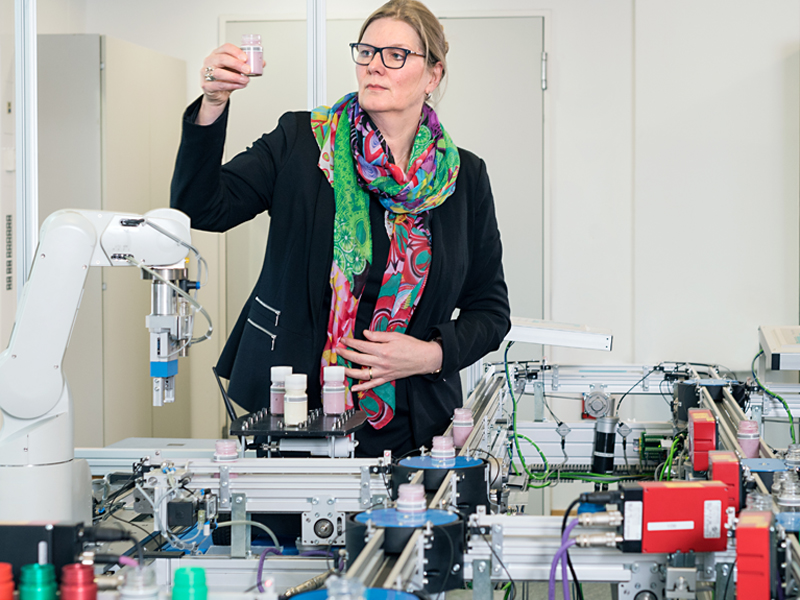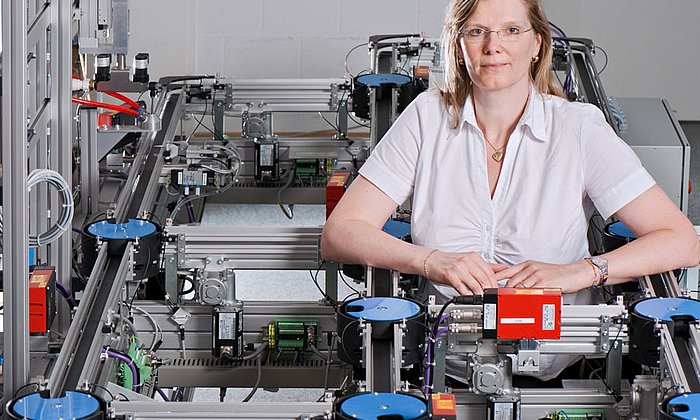Interview with Prof. Birgit Vogel-Heuser on Industry 4.0
"Many people think Industry 4.0 is something you can buy off the shelf"

Everyone's talking about Industry 4.0, but many aren't exactly sure what the term means. Is there a definition?
Vogel-Heuser: Yes, there are a number of definitions, but no single one which is generally accepted. Or definitions are kept so general that they really don't mean anything. Industry 4.0 is actually a concept with many different facets. It's just not possible to summarize them all in a single sentence.
What are the most common misunderstandings when it comes to Industry 4.0?
Vogel-Heuser: Many people think Industry 4.0 is something you can buy off the shelf. But that's impossible. Trade fair booths will often advertise with a banner saying something like "We have an Industry 4.0 PC". Utter nonsense. There's no way a PC as such can be Industry 4.0, it's just a device with software. And at training events I often hear things like, "Tell me how Industry 4.0 will work at my company." There's no such answer in general. Every company has to figure out for itself what parts of this plethora of Industry 4.0 components is interesting for the company, for its business and its customers.
Can you give us some examples?
Vogel-Heuser: A training session brought me into contact with a company where a lot of work is still done manually. There's also a large core machine which often breaks down. Now the company has joined together with a competitor that also uses this type of machine. They've launched an Industry 4.0 project together with the machine manufacturer, with the objective of reducing breakdowns and identifying causes. In another case, a major company with many different departments needed to optimize communication and cooperation between the departments in order to improve engineering and data evaluation. This is why you can't simply say: Tell me what I should do at my company. Here everyone has to think about their own weaknesses and strengths and what's most beneficial for them.
So Industry 4.0 optimizes companies?
Vogel-Heuser: Yes, it is an optimization process. Ultimately we want our systems to work better so that we remain competitive or even improve our competitive abilities. This is where the various mechanisms of Industry 4.0 come in. For example, now I can network myself, since a good Internet connection is available almost everywhere. And this networking can take place not only within my own company, but also for example with the competition. Many companies are readily willing to share a certain amount of their data with some of their competitors, since this way they gain additional knowledge for example better results in data analysis to a broader data base. And more knowledge means I can work more productively.
How does this look in tangible terms?
Vogel-Heuser: For example, a manufacturer and a construction contractor can share data about construction machinery, about how often a given piece of equipment is used, which routes it travels or what error messages are generated. When I see the piece of equipment has failed, I can quickly find out where I can buy or borrow a replacement or a spare part. This may even be from a competitor, if I happen to know he doesn't need his bulldozer right now. And I give him a little money for it, then we both profit from the situation. This is what's really new, extending horizons beyond company boundaries.
You are working together with several other professors in the "MyJoghurt" project ...
Vogel-Heuser: Professors can also be in a way competitors, when they research and teach at different universities. We want to show that we too can join together to build something and learn together, even without additional funding. Each individual has his or her strengths and runs different lab plants, and when we join together, the result is an Industry 4.0 system. And that's exactly how it worked, we jointly developed models and wrote software together.
The MyJoghurt plant demonstrates another aspect of Industry 4.0: The intelligent product. How does that work?
Vogel-Heuser: Well, in a manner of speaking we have a yogurt jar that knows how it wants to be filled. Let's say you want mango and strawberries. First you have to find out if that can be produced, i.e. are all the ingredients available and can these fruits be processed at the plant in the first place. Then the jars start to move and get what they need: In a sense they're in contact with the machinery. The idea itself is rather old - but now it can be actually put into practice.
For many people the term Industry 4.0 means completely automated production where no additional human support is needed ...
Vogel-Heuser: We're not working towards factories that are entirely devoid of humans. There are certain things machines can do better than humans, for example lifting heavy things and performing monotonous activities such as evaluating data. We want to be rid of these simple but time-consuming tasks, the many little things that keep us from doing what we actually want to do. And Industry 4.0 can make an important contribution. There are still other things humans can do better than machines, such as reacting to critical and unexpected situations. In Industry 4.0 machines are also intended to support humans in doing their work.
How would that look?
Vogel-Heuser: The question is: How can I train less-qualified employees so that they can for example operate a given machine. The important thing is to break complex tasks down into simple steps and to avoid overwhelming the people involved. It's possible to interpret their reactions, for example with glasses that monitor the line of sight. If someone is looking around without knowing what to do, the fact can be detected and an attempt can be made to find out what the person hasn't understood. This information can in turn be used to reprogram and improve the interface and the software.
Contact:
Prof. Dr.-Ing. Birgit Vogel-Heuser
Technical University of Munich
Tel.: +49-89-289-16400
vogel-heuser@tum.de
More information
High-resolution images
Technical University of Munich
Corporate Communications Center
- Stefanie Reiffert
- stefanie.reiffert@tum.de
- presse@tum.de
- Teamwebsite

